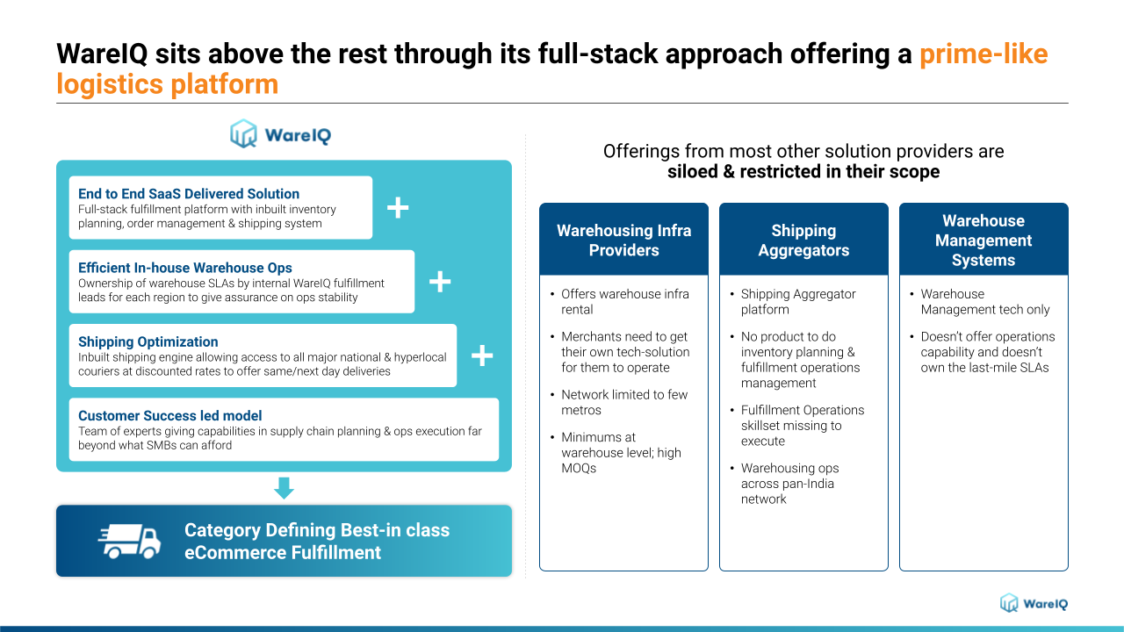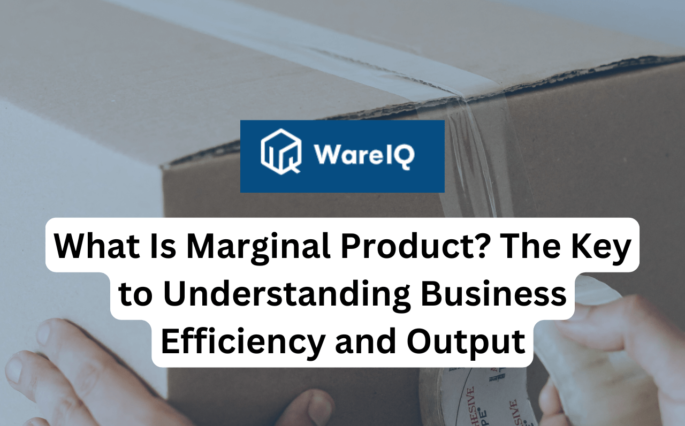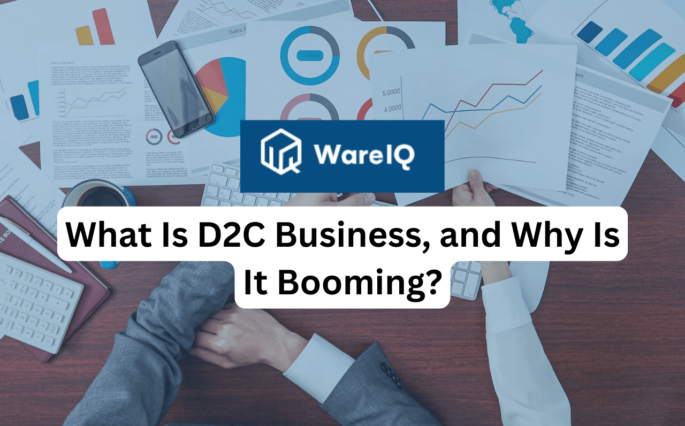What is a Logistics Center? Definition, Types, Functions and Components of Logistics Distribution Hub in 2025

Logistical operations are a primary aspect of eCommerce as it is responsible for important processes such as transporting finished goods from suppliers to the storage facilities of retailers and, ultimately, successfully delivering orders to their end customers. A variety of different operations involved in the organization of resources, storage of inventory, transportation of goods and more can be grouped under the logistics umbrella.
While some retailers separate their storage facilities and logistics procedures into distinct segments, others consolidate them into a single function through logistics centers that provide standard warehouse functions and logistics facilities. Read along to get an in-depth look into what a logistics center is, the various types that are used, the components within them and elements that are involved in the functioning of a logistics center.
- What is a Logistics Center?
- 5 Typical Functions of a Logistics Center
- 5 Types of Logistics Centers in eCommerce
- What are the Components Commonly Found in a Logistics Center?
- Conclusion: How WareIQ can Help Improve Your eCommerce Logistics Through Its Wide Network of Logistics Centers in 2025?
- Logistics Center: FAQs (Frequently Asked Questions)
What is a Logistics Center?
A logistics center is a warehouse-like facility where conventional warehouse operations such as storage of inventory, picking and packing of goods and preparing orders for dispatch are carried out alongside various logistical processes such as first-mile delivery, transporting goods, last-mile delivery and others. Logistics centers can comprise a single location or multiple locations depending on the requirements of a business, and they can also vary in terms of the functions they perform. For instance, some logistics centers can be used as storage facilities, while others are primarily used as distribution hubs. This assists retailers in streamlining and monitoring multiple important fulfillment processes under one roof that are divided into many different categories.
WareIQ, an eCommerce fulfillment company, empowers online brands with a superior-tech platform to compete with Amazon like service levels by bringing their average delivery timelines from 5-10 days to 1-2 days.
5 Typical Functions of a Logistics Center
Storage and Handling of Materials
The primary function of a logistics center is the storage of inventory till it needs to be transported to another location or delivered to a customer. Logistics centers also act as distribution hubs by receiving inventory and materials from suppliers or other destinations and arranging them in an organised way so that they can be easily accessed when they need to be shipped out.
Preparing Orders for Dispatch
The ultimate goal of storing inventory is the hope to eventually sell it to customers to generate revenue. Since logistics centers are responsible for storing inventory, they are also required to prepare orders when they need to be dispatched and this involves locating the item, packaging it, labeling it, and loading it onto the relevant vehicle so that it can be transferred to its next destination.
Inventory Management
This involves using a warehouse management system (WMS) to accurately store inventory based on various criteria such as popularity, dimensions, expiry date and more. The goal is to make products as easily accessible as possible so they can instantly be located and dispatched. Additionally, the WMS software also keeps track of changes to inventory levels in real-time and updates it to reflect when items are added or removed from storage.
Transportation of Products
Logistics involves transporting goods to various destinations until they are successfully delivered to their final customer. Logistics centers act as dispatch points for various products to be stored till the time they need to be dispatched or transferred to an alternative location. Thus, they are often equipped with loading facilities such as parking bays, cranes, forklifts and more to enable products to be transported to their next location.
Providing Information and Insights
Since there are so many different activities that take place in a logistics center, with most of it being tracked by a WMS or other advanced software, insights into many different aspects such as identifying high-demand and low-demand products, order frequency, success rates and performance of various processes are provided. This enables firms to monitor and analyse this data to streamline important processes and remove obsolete ones.
5 Types of Logistics Centers in eCommerce
Fulfillment Centers
This type of logistics center can handle a wide variety of processes in addition to the storage of inventory. Retailers can often access fulfillment centers through 3PL companies and are often equipped with state-of-the-art inventory management software and automated machinery to optimise tasks such as selecting, packaging and dispatching products. Fulfillment centers are generally part of a much larger, nationwide network so inventory can be stored based on certain factors such as proximity to customers and distribution hubs. Fulfillment centers are often the starting point for last-mile delivery operations and are designed to swiftly dispatch orders so that delivery executives can fulfil them.
Distribution Hubs
Distribution hubs are often used interchangeably with fulfillment centers. However, they lack many of the facilities and services that are offered by fulfillment centers and are primarily used as transit stops for inventory to be distributed to its final location, whether it is to be stored in a fulfillment center, dispatched to be shipped to another destination, sent out for last-mile delivery or transported to a brick and mortar store in the case of brands that follow a hybrid system of online and physical retail.
On-Demand Warehouses
On-demand warehouses are a type of logistics center that retailers can use to store their inventory on a temporary basis. The amount of storage they require is leased to them by an external company or warehouse operator for the specific timeframe they need it for and hence, it is a lot cheaper than conventional fulfillment centers or storage hubs. This works for retailers that deal in seasonal products or that may not have the resources to store products on their own or acquire large amounts of storage space. On-demand warehouses offer enhanced flexibility due to their provisional nature but they do have some drawbacks such as a lack of consistency and uncertainty when the lease is up.
Dark Stores
This type of logistics center, also referred to as a micro fulfillment center, behaves like a scaled-down version of a fulfillment center. It is a retail store that is designed to cater to local customers in a given area by allowing retailers to store their goods so that they can quickly dispatch customer orders.
While it does not directly sell goods to the public, the minuscule nature of dark stores allows them to be quickly set up in different localities in large numbers and are best used by retailers that sell perishable products such as food, beverages, groceries and other items that have a short expiry date, because they are located in close proximity to customers. They also allow sellers to separate their inventory storage into multiple dark stores to avoid excess strain on their primary fulfillment centers.
Processing Centers
These logistics centers work in a similar manner to distribution hubs but consist of heightened order processing capabilities. While conventional distribution hubs can do basic processing tasks such as locating, packing and shipping an item, processing centers take a more nuanced approach by being able to deal with specialized goods such as fresh seafood, assemble and install product components, having value-added features such as temperature controlled, dust-proof storage facilities and much more. Their functions are like a fusion between a distribution hub and a factory due to its increased capabilities.
What are the Components Commonly Found in a Logistics Center?
Shipping Terminals
These terminals are generally equipped with heavy machineries such as cranes, forklifts and other industrial-grade machinery in order to be able to lift and load bulky and regular-sized items alike onto transit vehicles such as ships, trains or trucks. This is an important component of a logistics center as it is responsible for being able to initiate the transport of products and raw materials to their final destinations.
Intermodal Dispatch Points
This aspect of a logistics center is responsible for loading, unloading and transporting products by different means such as air, road, rail or sea. They generally comprise large loading docks, parking bays for multiple large vehicles and separate entries and exits for different purposes such as transfer, dispatch or loading of products. They also have many facilities to store high-risk goods, ensure that products are stored safely and provide the appropriate amount of security to ensure that there is no theft or pillaging of items.
Last-Mile Transport Hubs
They act as distribution hubs and are designed to cater to fulfill orders to local areas. There are generally at least one or more locations present in cities with a significant customer presence, and products are transported from other fulfillment center locations and stored in these hubs so that they can eventually be picked up by delivery executives so that last-mile delivery to the final customer can commence.
Conclusion: How WareIQ can Help Improve Your eCommerce Logistics Through Its Wide Network of Logistics Centers in 2025?
Using a logistics center is a must for an eCommerce business, regardless of which type they choose. Inventory storage and logistics are 2 key components of eCommerce and a logistics center provides a way to merge them so that they can both be operated and monitored from the same location. This enables more transparency across processes and can assist firms in streamlining their inventory management and logistical procedures. If you are an eCommerce retailer that needs help with storing your products or improving your logistics, WareIQ can be the solution.

WareIQ is an Indian eCommerce fulfillment company that is one of the most rapidly growing in the country due to our use of advanced technology to tackle a wide range of eCommerce requirements from inventory management to order fulfillment. A few ways we can help improve your storage and logistics requirements are listed below:
- We offer a nationwide network of fulfillment centers and dark stores with intelligent inventory placement that stores your inventory in close proximity to your customers and transport hubs
- We provide a custom WMS that can integrate with more than 12 eCommerce selling platforms and can track inventory across multiple fulfillment centers in real-time
- We offer a choice of more than 20 of the biggest shipping aggregators in the country and always assign the quickest and most cost-effective option for every order
- We offer value-added services such as an app store that has a catalogue of multiple applications to enhance the productivity of various eCommerce functions
- We provide an RTO Shield to mitigate the damage caused by returns and provide insurance against RTOs
Suggested – Hub and Spoke Distribution Model: Transforming India’s Supply Chain








